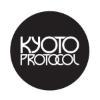
On 11 December 1997 at Convention of Parties (COP) 3, the Kyoto Protocol was adopted but did not enter into force until 16 February 2005 when it was ratified by the majority of countries around the world, currently, that stands at 192. This international Agreement is linked to the United Nations Framework Convention on Climate Change (UNCFFF) and was designed to enable industrial nations to take a lead in addressing the problem of climate change.
The major feature of this protocol is that it sets binding targets on industrialised countries including the European Union. These developed countries agreed to reduce their greenhouse gas (GHG) emissions relative to 1990 levels for the period 2008-2012. Ireland met its Kyoto Protocol targets under the EU burden-sharing agreement.
A second commitment was entered into under the Protocol to cover 2013-2020. This is known as The Doha Amendment, which was adopted in 2012 in Doha and came into force on ratification on 31 December 2020. For the European Union (EU), the commitment to reducing GHG emissions largely mirrored that of the 2020 Climate and Energy Package but with some difference. However, this has now been superseded by the Paris Agreement.
A major feature of the Kyoto Protocol was the establishment of flexible market mechanisms such as Emissions Trading, Clean Development Mechanism (CMD) and Joint Implementation (JIJ). These allowed for cost-effective trading in the marketplace. This is the basis of the European Union Emissions Trading Scheme (ETS) of which Ireland is part.
In December 2009 during the COP15 in Copenhagan the aim was to negotiate a successor to the Kyoto Protocol. Whilst it was not as success as many had hoped, it did result in the Copenhagan Accord.
There have been many COP meetings since that one in Copenhagan in 2009 and one worth noting is the COP16 which took place in Mexico in December 2010 and resulted in the Cancun Agreements.